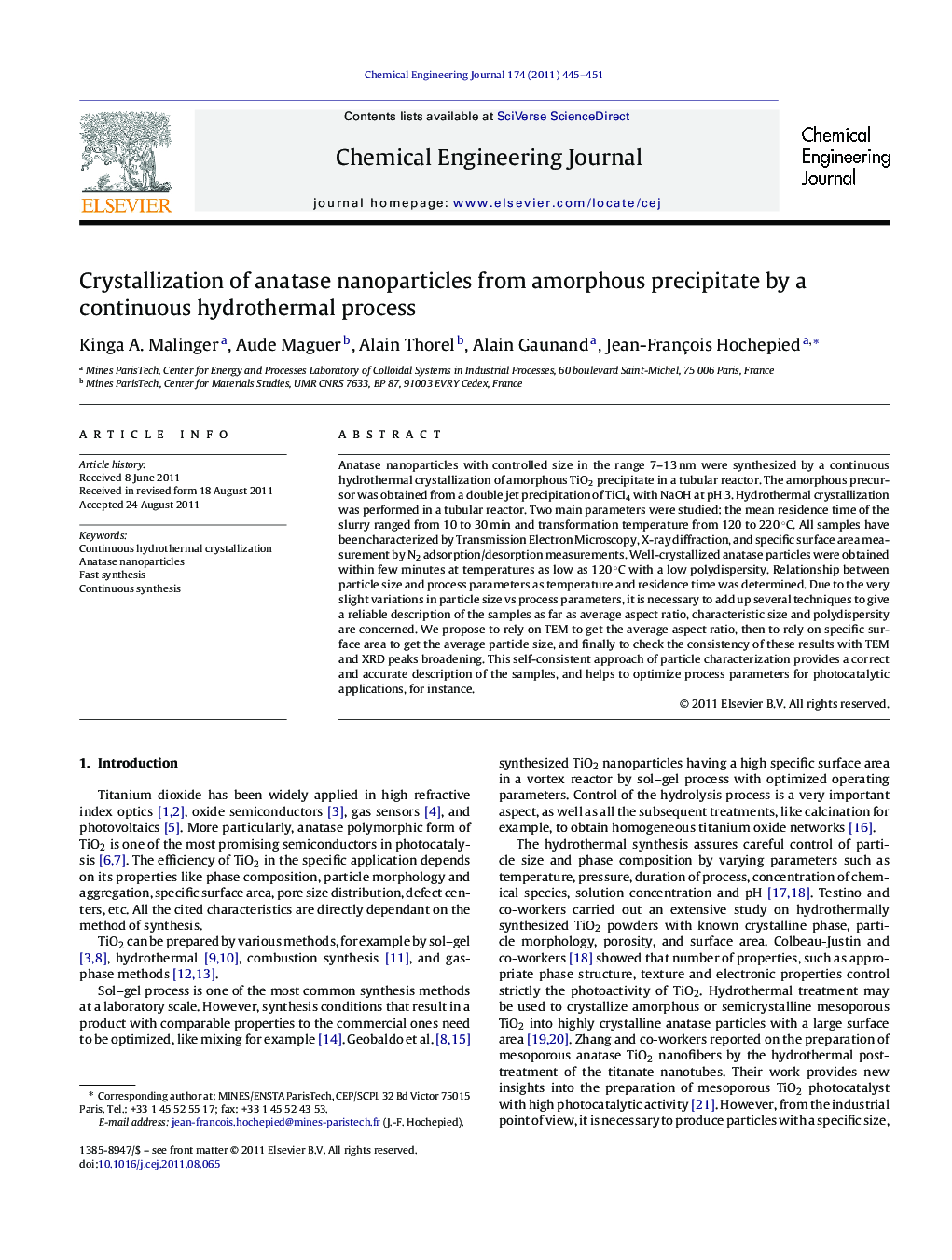| Article ID | Journal | Published Year | Pages | File Type |
|---|---|---|---|---|
| 150556 | Chemical Engineering Journal | 2011 | 7 Pages |
Anatase nanoparticles with controlled size in the range 7–13 nm were synthesized by a continuous hydrothermal crystallization of amorphous TiO2 precipitate in a tubular reactor. The amorphous precursor was obtained from a double jet precipitation of TiCl4 with NaOH at pH 3. Hydrothermal crystallization was performed in a tubular reactor. Two main parameters were studied: the mean residence time of the slurry ranged from 10 to 30 min and transformation temperature from 120 to 220 °C. All samples have been characterized by Transmission Electron Microscopy, X-ray diffraction, and specific surface area measurement by N2 adsorption/desorption measurements. Well-crystallized anatase particles were obtained within few minutes at temperatures as low as 120 °C with a low polydispersity. Relationship between particle size and process parameters as temperature and residence time was determined. Due to the very slight variations in particle size vs process parameters, it is necessary to add up several techniques to give a reliable description of the samples as far as average aspect ratio, characteristic size and polydispersity are concerned. We propose to rely on TEM to get the average aspect ratio, then to rely on specific surface area to get the average particle size, and finally to check the consistency of these results with TEM and XRD peaks broadening. This self-consistent approach of particle characterization provides a correct and accurate description of the samples, and helps to optimize process parameters for photocatalytic applications, for instance.
► Anatase nanoparticles with controlled size in the range 7–13 nm were synthesized by a continuous hydrothermal crystallization of amorphous TiO2. ► Well-crystallized anatase particles were obtained within few minutes at temperatures as low as 120 °C. ► Relationship between particle size and process parameters as temperature and residence time was determined. ► Continuous hydrothermal crystallization of amorphous precipitate.
